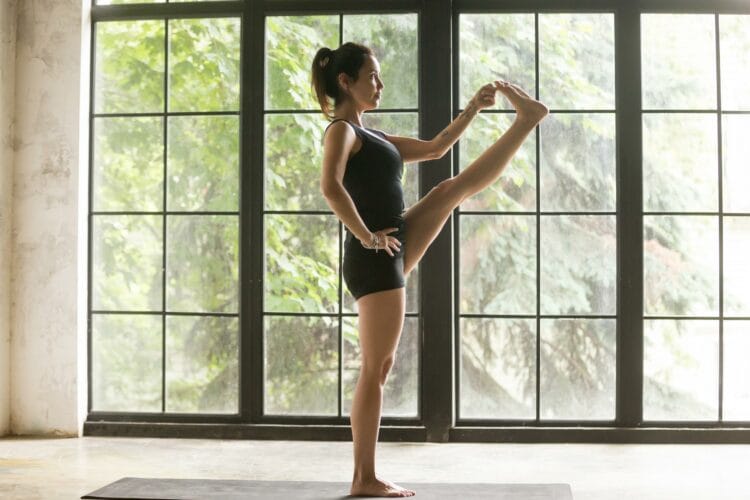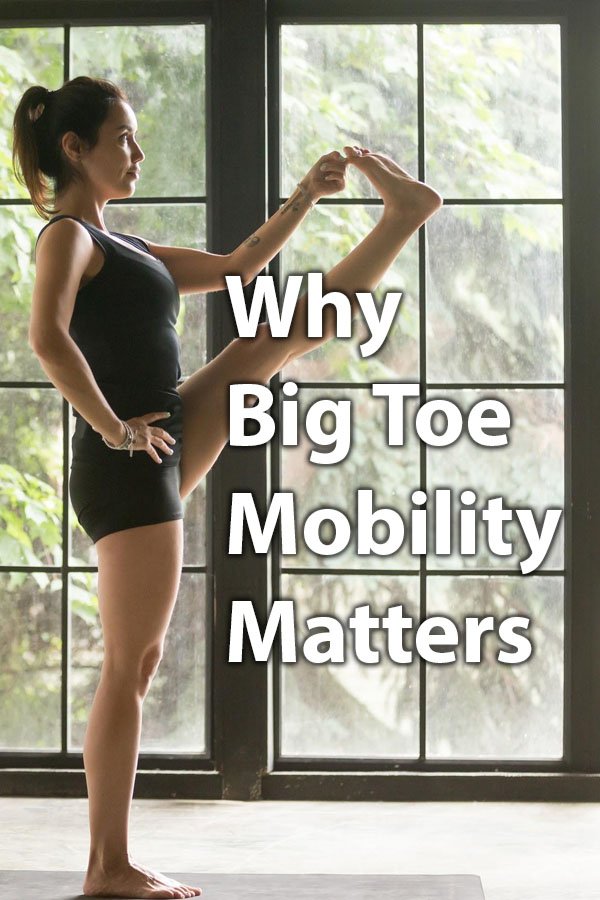Description: Fitness and physical therapist pros state that big toe flexibility really matters. And that’s true! In this post, we’ll discuss why big toe mobility is so important and how to improve it. Keep reading!
Have you ever thought about your big toes? Unfortunately, they are usually undervalued compared to other body parts. However, big toes play a more important role in our everyday lives than we may think.
You are in the right place if you aim to find out everything about big toe mobility and how to improve it. Scroll down!
Big Toe Anatomy
A big toe or Hallux is made up of two phalanges: a proximal and distal. A healthy toe can move down (big toe flexion), lift up (big toe extension), and move out to the side (big toe abduction). There are seven big toe muscles. Can you imagine that? Seven! They all contribute to the overall individual’s mobility and stability.
Why Is Big Toe Flexibility Important?
A big toe should be able to lift up with no movements in the ankle. If it’s rigid, this can lead to a big problem since we need this action for good movement, whether we walk, run or exercise. Up to 90% of the control of the foot, body’s kinematic chain, and the ability to have balance come from a big toe.
Therefore, toe flexibility and extension are critical for a normal gait cycle. Without flexibility and extension, the stability of the plantar fascia and arch can be badly affected. The tightness and weakness of the great toe cause issues with walking, jumping, lunging, running, and squatting.
Besides, you are prone to plantar fasciitis, Achilles tendinitis and knee issues.
Normal Big Toe Extension
We need from 60 to 65 degrees of extension for normal gait; it means 80-90 degrees in natural big toe stretch. Such an amount of motion provides the right foot position and supports weight-bearing loads. Plus, it helps in the propulsion of the foot.

Why Can We Lose Big Toe Mobility?
Hallux mobility can be lost because of an infection, arthritis, trauma, e.g., broken toe, a toe fracture, or a phalangeal fracture. However, mobility loss can occur not only because of a direct toe injury. If a person gets a foot trauma, it can also seriously impact a hallux. Furthermore, some activities like dancing or sport that demand continued repetitive movements can lead to big toe injury as well.
If you get a severe trauma, it can take weeks of treatment to achieve the needed mobility. However, if the injury is not that bad, you can use some well-tried tips for broken toes. Anyway, you should call a doctor right away if you think you’ve broken a hallux, whether the case is serious or not.
How to Test Big Toe Mobility?
If you suspect your big toe is not flexible enough, there are two things you can do: see a therapist or test the hallux yourself. Note that it’s always better to be examined by a specialist.
A therapist should test you for hallux limitus (reduced big toe mobility) if you complain about any following symptoms: lower leg pain, knee pain, hip and lower back pain, and toe pain, of course.
However, you can test the toes by yourself. Remember that it’s crucial to assess both sides to see if there is any difference.
Here are several tests you can use at home to watch your big toe extension:
- Watch the toe when you walk. It should bend back easily and push off the ground without the need for the extra effort;
- Sit down with your legs extended, pull big toes into extension with your fingers;
- Stretch at stairs:
- Place a toe at the stairs crease;
- Lean forward while keeping the base of the toe down on the top of the stair.
The base of the toe must stay on the stair and the toe must be able to extend to almost flat against the next stair. If so, your toes are ok, just don’t forget to compare toe position and tightness side to side.
If you have noticed that the toes are stiff or rigid, don’t panic! There are simple exercises that can help to improve the big toe movement. Make sure to do them regularly and everything reverts back to normal.

Big Toe Exercises
There are lots of exercises you can do for your big toes. Some of them are more difficult, but they will help not only with hallux but also with other body parts like ankles and legs. Here are a few 3 varieties:
Big Toe Stretch
This exercise is great not only for the toes but also for the dorsal medial/lateral parts of the foot. You can do it on the carpet or other soft surface:
- Stand straight, lean on a wall for stability, point your right foot back away from the body. The front of the toes is braced toward the floor.
- Keep the toes pushed against the floor.
- Put your weight onto the right leg and push the bottom of the heel down toward the floor.
- Stay in this position for up to 5 seconds, then slowly get back to the starting position.
- Repeat these steps approximately 10 times with each foot.
Toe Turns
This is another easy stretch that improves the flexibility of the big toe joint:
- Sit down, place your feet flat on the floor, knees at 90 degrees angle, lean your back on the chair for support and comfort.
- Turn the toes of both feet slowly, this way the ball of each foot will slightly raise from the floor.
- Keep this position for up to 5 seconds, then relax the curl position to the flat one.
- Repeat this exercise 10 times.
Manual Manipulation
Manual manipulation or pullback stretch is often used in massage therapy. And it’s straightforward to do at home:
- Sit down on the floor or in the chair, make yourself comfortable;
- Cross the ankle over the opposite knee;
- Rest your fingers on the big toe; your fingertips must be placed on the bottom of the foot (large joint at the base) where your toe joins to the foot.
- Press your finger into the top joint and slowly bend the toe backward;
- Hold it for about 10 seconds, and then relax;
- Repeat this exercise up to 5 times;
- Repeat the stretch for the opposite foot.
Bottom Line
We hope this post has shown you the importance of adequate big toe mobility. If you suffer from pain in your legs, lower back, or your big toe is stiff, then it’s time to do something about it now. Don’t wait, or you may risk a need for surgery.
Follow our simple tips, add the discussed above exercises into your daily routine, and you’ll improve your big toe extension and flexibility.
Bio: Thomas Nemel has got a strong background in athletics. He’s passionate about a healthy lifestyle and keen on sports equipment. Thomas helps people to buy inexpensive but efficient fitness machines. He is also one of the authors on gym-expert.com. He shares his interests through writing. Thomas’ goal is to inspire others to engage in sports activities.


